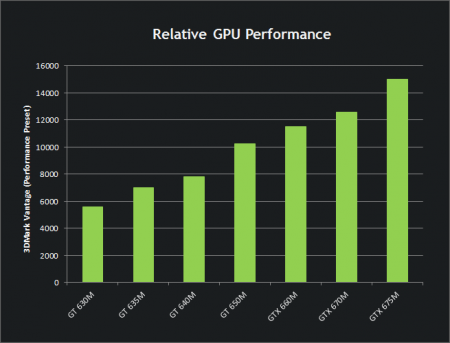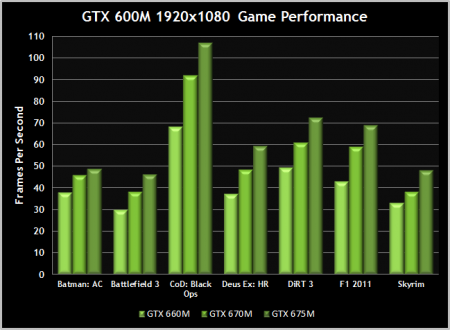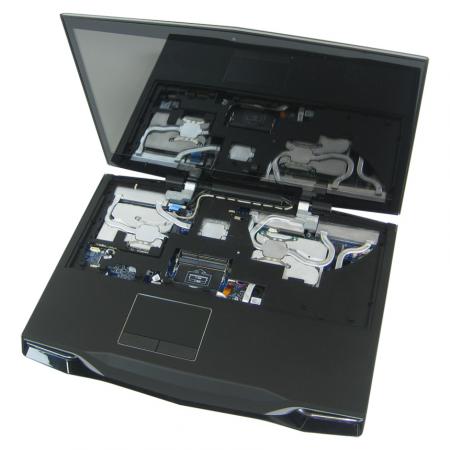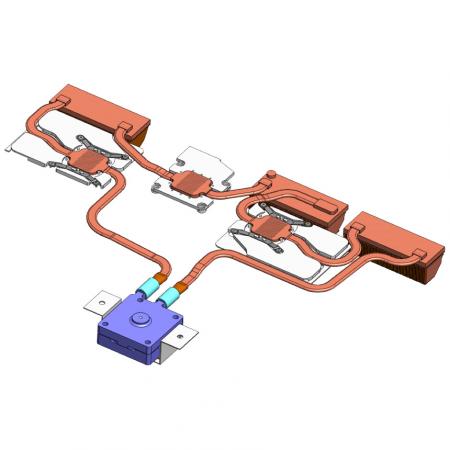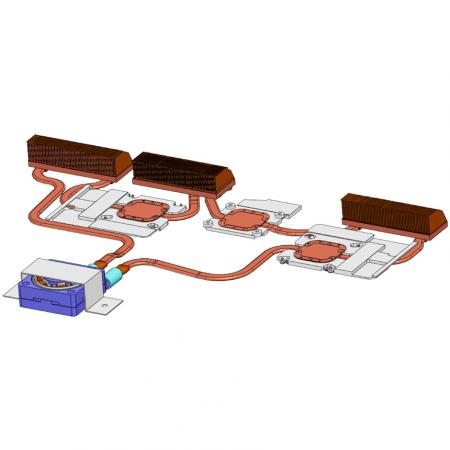Leaderboard
Popular Content
Showing content with the highest reputation on 03/23/12 in all areas
-
2 points
-
Check this out: Mobility and Sleek Design Without Sacrifice - Asetek, Inc.1 point
-
So... after months of wild speculating and guessing we finally have some first official numbers regarding the new mobile GPUs of Nvidia. Here the specifications listed on the official Nvidia site: GTX 660M GTX 670M GTX 675M Graphics Clock 835MHz 598MHz 620MHz CUDA Cores 384 336 384 Texture Fill Rate (billion/sec) 30.4 33.5 39.7 Memory Interface DDR3/GDDR5 DDR3/GDDR5 DDR3/GDDR5 Memory Clock 2000MHz 1500MHz 1500MHz Memory Interface Width 128-bit 192-bit 256-bit Memory Bandwidth (GB/sec) 64 72 96 Max SLI Configuration 2-Way 2-Way 2-Way 610M GT 620M GT 630M GT 635M GT 640M LE GT 640M GT 650M Graphics Clock 900MHz 625MHz 800MHz 675MHz 500MHz 625MHz 850MHz CUDA Cores 48 96 96 144 384 384 384 Texture Fill Rate (billion/sec) 7.2 10 12.8 16.2 16 20 27.2 Memory Interface DDR3 DDR3 DDR3/GDDR5 DDR3 DDR3/GDDR5 DDR3/GDDR5 DDR3/GDDR5 Memory Interface Width 64-bit 128-bit 128-bit 192-bit 128-bit 128-bit 128-bit Memory Bandwidth (GB/sec) 14.4 28.8 32 43.2 28.8 64 64 There are seven 600m series GPUs which can be considered low- to middle-end and three which are high-end.No word on the Nvidia site about which manufacturing process is being used for these chips, but the statement telling one should assume that they really shifted to 28nm only, but I want to see this confirmed before I really believe this to be true.Anyway, looking at the specs of Nvidias new mobile flagship, the GTX 675m I can't help but to think that they just shrinked the fermi architecture... the specs and clocks are identical to the 580m. They might also have messed up the numbers they put on the site, it just seems unlikely that all GPUs from the 640m up to the 675m all have the same core count (except for the 670m).Well, I guess we will see more information in the near future, when the first systems with these GPUs are getting released. I'm definitely curious about how they perform and can't wait to see some benchmarks. Also the overclocking capability is going to be a very interesting point. So far there's no word about new features for this GPU series, so it's unclear whether the "clock boost" technology which can be found in the desktop GTX 680 will also make its way to the mobile GPUs. Here some performance graphs, also taken from Nvidias website:[ATTACH=CONFIG]3707[/ATTACH] [ATTACH=CONFIG]3708[/ATTACH] So far I'm really not that impressed, though we have yet to see the real world performance, and tbh I'm really curious about the AMD 7000m series :)1 point
-
Nice implementation of watercooling... Im impressed. I like the above could be interested in such a cooling system. Why did they not show temps stock heatsinks @ stock and overclock then watercooled @ stock and overclock? Can we find that data? Is it actually cooler at those speeds and less noise or is it just less noise and temps are comparable to stock heatsink? What if stock heatsinks were interconnected? Its already been discussed last year in M18x Gpu and Cpu cooling discussion. The data about temp difference should be a important part too... Id love to see this marketed but still would like to see more performance comparisons and more data. Top notch implementation though. Great article @Brian Edit: what about warranty can these be installed by dell to keep it official or will these strictly be DIY and whats a warranty good for anyway theory? Edit 2: I just want to say as a general range when someone has repasted and ensured good contact etc on stock heatsinks GPU AMD 6970m's or 6990M's that clocking to 800mhz on those apps wont give crazy temps either on stock heatsinks. Ive seen enough users at nice temps in that range. We know like Jimbo is getting at we can easily pass those tests even gpu wise at those clocks. Raise your mem and its likely to see a even larger increase in temps... so key points are important for comparison. 76c was hottest temp on fans on gpu @ 822 core 1100mhz mem on 6970m xfire after repaste when i left the system in game for hours on Skyrim and BF3 and others... if i left mem stock temps would be lower than that 76c it was nearly 12 -18 hours on a desk with proper ventilation (a lift) in a hot room no room conditioning. In those benches it didnt break 70c ever. 6990m has more shader but surely 800mhz would be similar to heat from the 6970m at 822mhz and 1100mem... so is the benefit of a quiet system the only real benefit or is there large gains in the cooling of these components. We all know as the discussion last year there would be some sort of benefit uniting all three heatsinks to help disperse heat... does implementing liquid cooling add a further benefit to the temps at such a scale or does the real benefits show on only the bigger brother desktop cooling solutions only?1 point
-
at least the weather report was entertaining. mexico better watch out, this storm is gonna bust a nut soon.1 point
-
Hmm, afaik the current AW systems aren't designed to be run without battery, that's also a reason why it's harder to remove it. If I'm not mistaken then the battery also serves as protection against voltage fluctuations.1 point
-
1 point
-
From first appearance it looks like the whole thing is interconnected and would require it to be removed in order to pull a video card out. I honestly have no problem with that if it came to it because increased cooling capacity far outweighs the other cons. Thus far I have never upgraded my video card, I simply sell the notebook and move on to a newer one. So if it limits or makes upgrading GPUs tougher, I don't really mind. MXM will still be there and those that are technically adept will be able to perform the upgrades while the noobs will have to rely on techs or a new notebook--that's how it should be.1 point
-
And that's why i will never will buy a Clevo most likely never heck even the MSI notebooks offer more of a stylish design than Clevo ever can. You want that type of performance cheaper to make or buy a desktop, i personally one day just for the heck of it will get one of those X7200 or whatever they have out due to the fact i really prefer something sleek and not bulky like a desktop to each it's own but nothing can really beat the high end Alienware top notch machines like the M18X/M17XR2 and especially with speakers since now they have Klipsch hardware!! And really as Brian as always said you want a lunchbox or something that is truly made of steel even if the palm rest is plastic feels a lot stronger and durable than a clevo ever will.1 point
-
What version are you using right now btw? trixx or vbios 1.15V won't make a diff on OC, it's just safer with trixx and easier to change than flashing every time...1 point
-
Wait till ivy bridge + kepler lands and see what all the manufacturers bring. Clevo traditionally never supports overclocking in their bios but they have superior cooling vs AW. Both manufacturers are about equal in performance at stock but AW has better overclocking options so it gives it the edge. As for style and extra features, its a matter of opinion but I think AW designs are far better looking with added features (alienfx,wireless hdmi etc).1 point
-
1 point






